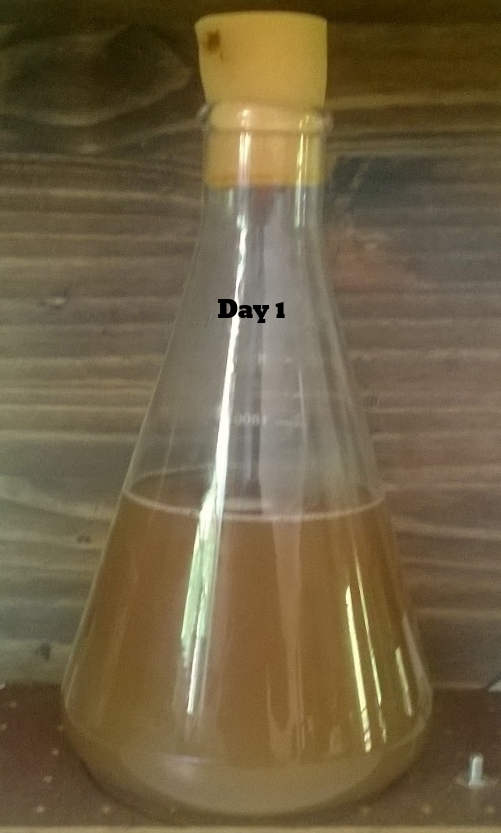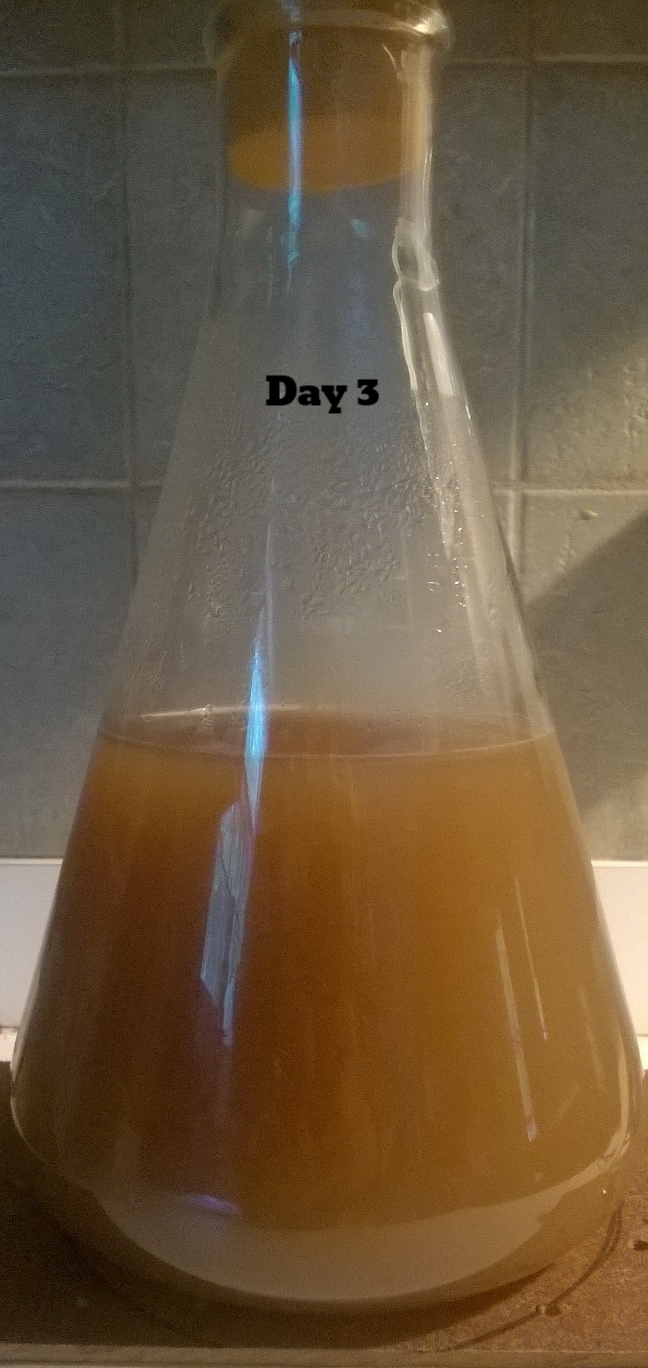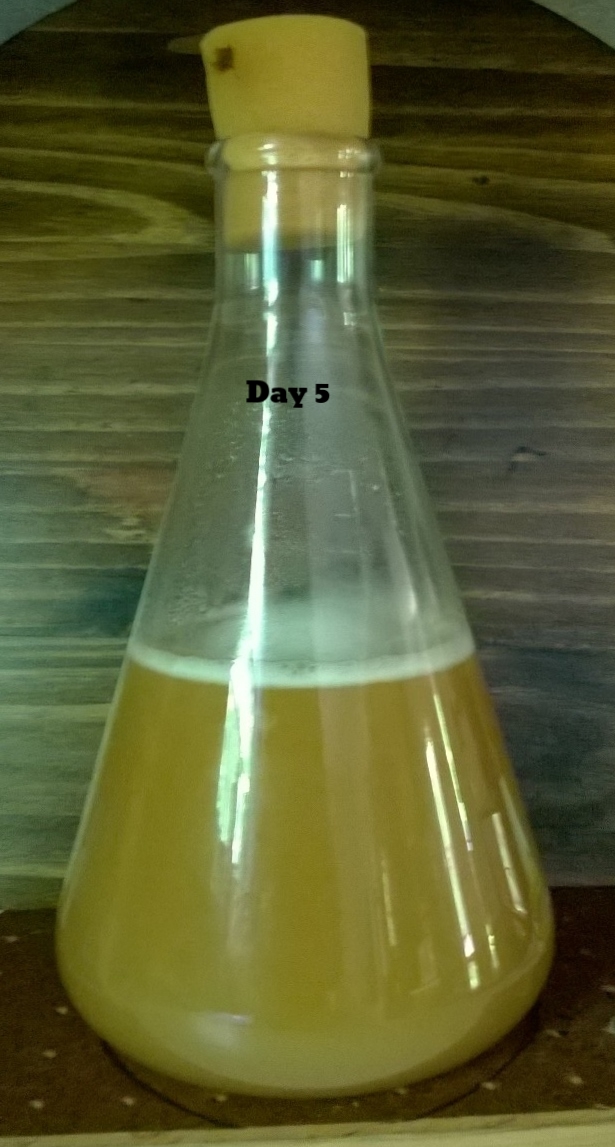I Tried It: 100% Brett-Fermented Homebrew - Part 1
I imagine that the trajectory homebrew has taken in my household is akin to parents with babies - at first, everything has to be clean and sanitized nearly to the point of being sterile to protect your offspring/homebrew; after awhile, though, you realize that your baby will live even if it eats Cheerios off the couch cushions and that your beer will still be drinkable even if you forgot to sanitize the scissors you used to cut open your yeast packet.
We have gotten so cavalier about our homebrewing that I decided to brew a beer solely fermented with Brettanomyces (Brett, if you're in the know) yeast. There are entire blogs and books dedicated to Brettanomyces because it is such a complex and relatively unknown living organism, so I'm not going to go into much detail about here, in part because I'm not going to pretend I understand how Brett works and in part because the science and mystery is out of the realm of us junior scientists.
Briefly, there are two types of yeast brewers typically use: ale yeast and lager yeast. Brett is a third type of yeast known as a "wild" yeast because it can spoil a beer very quickly as well as produce some funky flavors and aromas, such as horse blanket and pineapple. It's also known as a wild yeast because it can be hard to control and harder to predict. If Brett gets loose in your brewery or homebrew system, you will probably have better luck burning everything to the ground and starting a new life somewhere else rather than trying to get Brett out of your system and your beers. One homebrewer I knew said that he would create a sort of desert island for himself when he brewed with Brett by surrounding the ground around him with bleach to keep Brett from getting loose and wreaking havoc on the rest of his equipment.
So why use it? Because a well-made Brett beer can be heavenly. It evolves over time from fruity to goaty back to fruity and everything in between.
Back to my child analogy, deciding to brew a beer fermented 100% with Brett yeast is - I imagine - the equivalent of turning your child loose into nature to literally be raised by wolves.
While studying for the Advanced Cicerone exam, the delightful Wild Brews: Beer Beyond the Influence of Brewers Yeast by Jeff Sparrow was part of my recommended reading. I'm happy that it was because this book is incredibly entertaining and educational. Even if you think you don't need to know about wild yeast, I'm telling you that you'll enjoy this book. Reading Wild Brews inspired me to try my hand at brewing a Brett beer.
Another great resource dealing with wild beer is American Sour Beers: Innovative Techniques for Mixed Fermentations by Michael Tonsmeire. I have admittedly not read the entire book - it was a gift from my husband when the book first came out in 2014 and, at that point in my nascent beer career, I found the book over my head. Now I find it to be much more understandable. In formulating my Brett beer recipe, I found the (surprise!) recipe section for 100% Brettanomyces Beer to be the most helpful.
I decided to use the recipe inspired by Pizza Port's Mo' Betta Bretta as a starting point for my recipe formulation. I wanted a recipe with a fairly basic grain bill and basic brewing ingredients and instructions to lessen the chances of brewing a beer that had the bad kind of funky flavor and not the good kind expected from Brett. Using a complicated grain bill or mash schedule introduced too many variables and I wanted to make sure the Brett was showcased.
One important thing to know about brewing solely with Brett is that you have to make a yeast starter. A yeast starter is used to jump start yeast activity or increase the number of yeast cells. The more active your yeast is when you pitch it into your wort, the more active and vigorous your fermentation will be. (If you're not familiar with brewing, there's a saying that brewers make wort and yeast makes beer - we make the sweet liquid called wort but the yeast we pitch converts those sugars into ethanol.) Unlike most yeast starters, however, that only require one or two days to get going, a Brett yeast starter requires several days. Like, several days.
Suffice it to say, Brett yeast is a grower, not a shower. I've had yeast starters that get so vigorous they blow the stopper off the top of the Erlenmeyer flask (the laboratory flask commonly used to make yeast starters). We let our Brett yeast starter swirl away on our kitchen counter for seven days. A Brett yeast starter will not do that, or much of anything, really:
Finally, it was brew day. The brew day was pretty typical as the only difference from our usual brew days was the yeast we were pitching. Because my grain bill was composed of almost 75% Belgian pilsner malt, the boil was a little over two hours rather than the typical one hour.
The only changes I made to the original recipe were the hops and the particular Brett strain. Whereas the recipe lists Brettanomyces clausenii, which is one Brett yeast strain, I went with All the Bretts from Omega Yeast Labs, which has twelve Brett yeast strains. I particularly like the tropical, pineapple, and fruity aspects of Brett beers, so instead of using the recommended Magnum hops at 50 minutes for approximately 11 IBUs, I used an ounce of Australian Galaxy hops at 60 minutes. I had also just gotten a sampler box of South African hops that I was excited to use, so I threw in an ounce of an experimental hop called N1/69 at flame out. I chose N1/69 because it also has pineapple, citrus, and tropical fruit characteristics.
Brew day essentials
While the yeast starter didn't show much activity, our wort had a nice krausen on it the next morning and the vodka in the airlock was happily bubbling away, which is evidence of a healthy fermentation. Out of all the fermentations I've seen, I think Brett fermentation is probably the most fascinating and gross looking - at times it looks like the wort is actually breathing.
After being pretty pleased with ourselves, it slowly started to dawn on us that we potentially turned Brett loose in our house. Although I had cleaned the Erlenmeyer flask with hot water and soap like I normally do, I realized that we needed to do more than that cursory cleaning. Luckily my husband had the same thought and the flask is now sitting on our kitchen counter, soaking in sanitizer. We already have separate hoses, carboys, and kegs for our funky and/or sour beers, but we may now have a dedicated funky Erlenmeyer flask as well.
At this point, the Brett beer is still burbling away downstairs, so time will tell if it turns out to be the pineapple, tropical fruit, slightly funky beer I had planned on or whether it will be the bad funky and/or wreak havoc on our other beers. Which is all to say if you find out that I've been arrested for burning my house to the ground, you'll know this Brett beer experiment did not turn out well.








